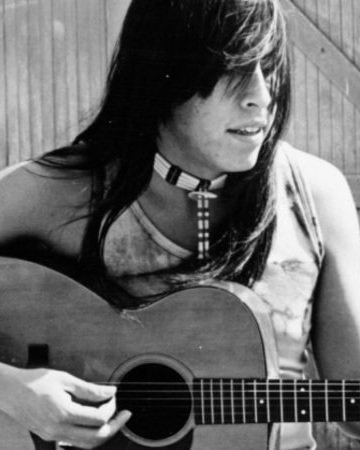
John Lennon
After reuniting with Yoko Ono in early February 1975 John Lennon began withdrawing from the music business. At the same time Morris Levy, the Mafia connected record company owner and music publisher, falsely claimed that Lennon had orally agreed to permit him to market via TV an unfinished Lennon album of rock ’n’ roll ‘50s oldies. Lennon decided to not be bullied by this gangster.
“I don’t want to settle with Morris, Jay. I want to be rid of him”, John said. “I’m tired of these phony legal cases. I want to put a stop to them.”
Morris Levy
Widely recognized in the music industry as an associate of Vincent “The Chin” Gigante, head of NYC’s Genovese crime family, was a dangerous grifter. With a reputation of repeatedly cheating singers and songwriters out of royalties, Levy was reputedly the model for Hesh Rabkin, the music industry mobster and associate of Tony Soprano in the TV series The Sopranos.
Yoko Ono
Yoko “auditioned” Jay Bergen in the drawing room of the Lennons’ seventh floor apartment in the Dakota in March 1975. She had read the two complaints filed by Levy’s lawyers and asked Jay many penetrating questions. Satisfied that Jay was the lawyer to represent her husband’s interests, she and John attended twenty trial days together.
“John and I are very worried about these cases...If we have to pay any damages, we want to keep them as low as possible. John does not want to settle with Levy.”
Jay Bergen
A partner in a prestigious NYC law firm, an experienced trial lawyer and an early and longtime Beatles fan was in a meeting with lawyers for Capitol Records when John Lennon surprisingly joined the meeting. So began a working relationship and friendship which enabled John and Jay to thoroughly prepare for the trial in January 1976.


May Pang
John Lennon and Yoko Ono’s beautiful, bright assistant who was pushed into John’s arms by Yoko when she ousted him from their NYC Dakota apartment in 1973 becoming his companion for the next eighteen months. This led to John’s “Lost Weekend” in Los Angeles and the ill fated start of recording John’s oldies rock ’n’ roll album overseen by the erratic Phil Spector.
“I think there was a few lead sheets laying around, but you don’t need a lead sheet to play ‘Tutti Frutti,’ you know. ”
Jesse Ed Davis
A Native American (Commanche/Kiowa) and brilliant guitarist with a sharp witty mind, Jesse Ed played lead guitar on Rock ’n’ Roll and Walls and Bridges (John’s last solo album of his songs) and was an excellent witness. He invited me to join him and The Faces and Rod Stewart when they played Cobo Hall in Detroit in October 1975. It was a night I will not soon forget, but more on that later because it’s not in the book.
Other Characters
William Schurtman
Schurtman, Morris Levy’s lawyer, filed two lawsuits in February/March 1975 against John Lennon, Harold Seider, Capitol, EMI, and Apple Records. After absenting himself from all of the substantive pre-trial proceedings, except for two conferences before the judge, Schurtman was the lead lawyer at the trial, a very risky proposition. Almost 40 years later in a 2015 book, Schurtman lied saying that he deposed John Lennon! He also lied about John’s clothes and personal appearance at the deposition and refusal to answer questions.
Alan Kanzer
Twelve years less experienced than Schurtman and six years less experienced than I, Kanzer was responsible for all of the pre-trial proceedings in the case. Kanzer deposed John and defended Morris Levy when I deposed him. Schurtman was MIA at these critical depositions, when he should have been the responsible attorney for Levy.
US District Judge Lloyd F. MacMahon
Judge MacMahon, an experienced trial lawyer and former US Attorney for the Southern District of NY, had been on the bench for 16 years. He had a reputation for running a very fast calendar and a tight, no nonsense courtroom. He abhorred unprepared attorneys. Judge MacMahon declared a mistrial and recused himself from the case on the trial’s second day.
US District Judge Thomas P. Griesa
Judge Griesa had been a partner in a well known Wall St. law firm before being appointed a judge four years before he was assigned to the Lennon/Levy case. The judge was the exact opposite of Judge MacMahon — studious, calm and curious with an inclination to ask lots of questions during a trial. He knew little about John Lennon or The Beatles.
Ed Mottau
Known then as “Eddie,” Ed played acoustic guitar on Rock ’n’ Roll and Walls and Bridges. A highlight of his testimony was: “They were all old songs from the ‘50s that everybody knew, all the musicians knew them from the time they were children.” Ed lives in New Hampshire and is producing an album by Paul Stookey of Peter, Paul and Mary fame.
Dave Marsh
In 1976 Dave, an associate editor of Rolling Stone, was responsible for record and performance reviews and his column American Grandstand. Dave listened to Rock ’n’ Roll and Roots so that we could discuss his opinion of each album. The next day I received a letter from Dave critiquing the two albums. I still have it and will post it on my website. His testimony resulted in a dramatic turning point during our presentation of evidence. (Chapter 40 “Do You Want Me To Tell You [What I Heard]?”)
Below: John Lennon during trial. © Bob Gruen.

LENNON, THE MOBSTER & THE LAWYER








